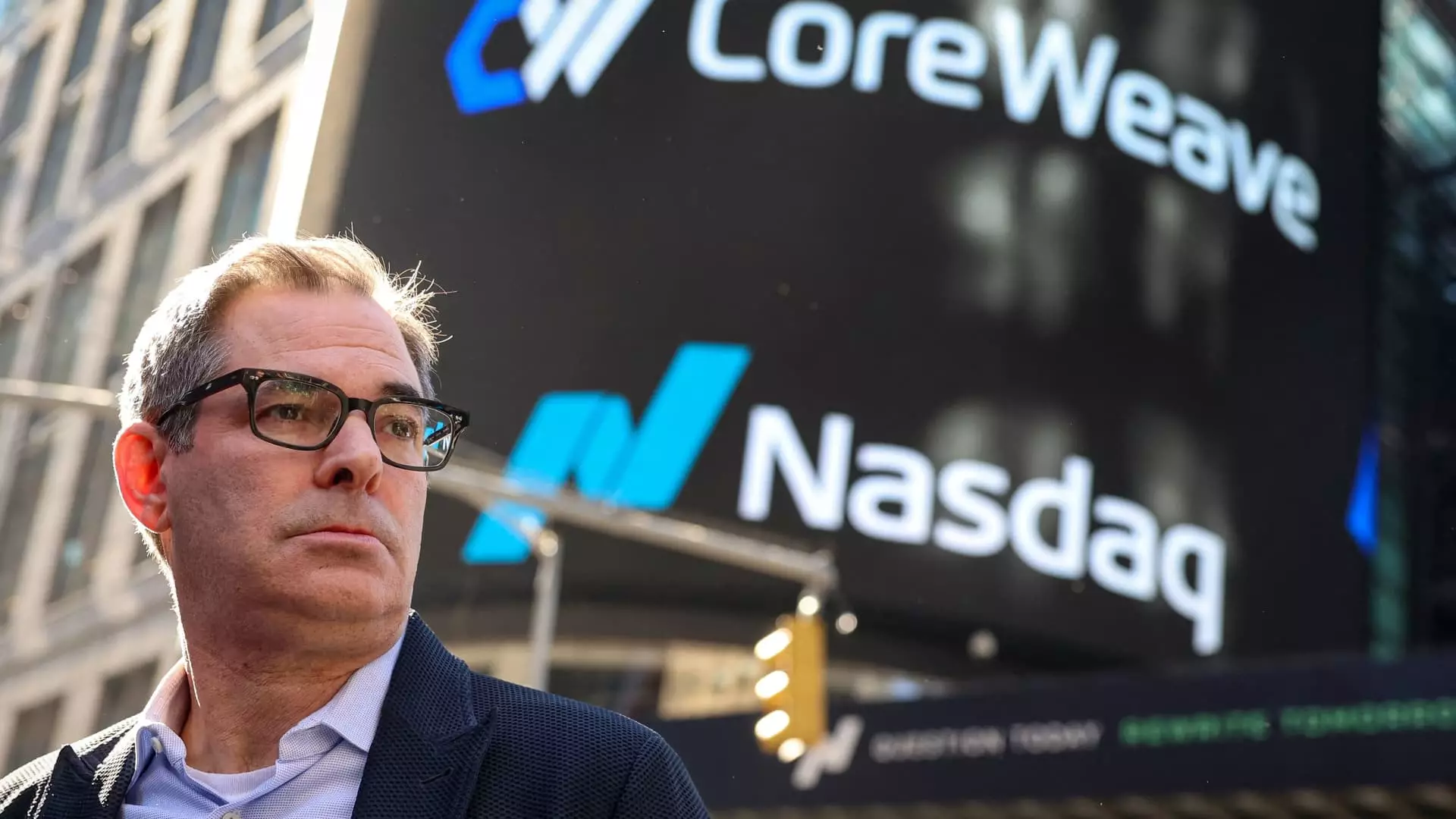CoreWeave has swiftly emerged as a notable player in the realm of artificial intelligence infrastructure—an industry teeming with potential yet riddled with uncertainty. The company’s recent earnings report, its first since going public in March, has sent ripples through the financial community. With reported revenues that outstripped analyst expectations and ambitious plans for capital expenditure, the narrative around CoreWeave is both enticing and tinged with skepticism. Indeed, while the advent of AI technology has the world buzzing with excitement about innovation and productivity, it also brings forth questions regarding sustainability and fiscal responsibility that demand undivided attention.
Capital Expenditure That Turns Heads
CoreWeave’s CEO, Michael Intrator, has boldly projected an astonishing $20 billion to $23 billion in capital expenditure (capex) for the year—a figure that dwarfs the anticipated $4.61 billion estimated by analysts from LSEG. Intrator attributes this dramatic uptick in spending to “demand signals” received from critical clients who are pushing the company for faster delivery of AI server capacity. Here lies the paradox: while the growth prospects appear robust, the hike in expenditure raises a critical question: at what cost?
The notion of piling on debt for growth in an emerging sector is enticing but fraught with peril. The company’s reliance on the rental model for AI servers, primarily powered by Nvidia chips, comes with inherent risks that investors cannot afford to overlook. CoreWeave appears to be banking on its major partnerships with technology titans like Microsoft and Nvidia, and indeed, an enticing five-year deal with OpenAI worth nearly $12 billion seems to blanket CoreWeave in a veneer of security. Yet, history has shown that reliance on a few key clients can lead to precarious situations, especially in volatile market conditions.
Investor Skepticism and Debt Doubts
Despite the upbeat rhetoric from CoreWeave’s leadership, Wall Street is not entirely convinced. Concerns over the company’s mounting debt have been raised by analysts such as Gil Luria from DA Davidson, who downgraded CoreWeave’s rating, citing the misleading allure of scaling in a capital-intensive business model. Luria points out that the financial equations do not favor the company’s aggressive expansion, suggesting that meeting short-term demand is failing to build a sustainable long-term foundation.
Such hesitancy is underscored by CoreWeave’s substantial net loss of $314.6 million, widening from the previous year’s $129.2 million. Critically, a sizeable portion of this loss—around $177 million—was tied to stock-based compensation, primarily attributed to the company’s public offering. Investors are right to question whether the allure of rapid growth is worth the financial strain it puts on the company. On the other side of the fence, Intrator insists that financing remains sound and that contracts in place enable continued scaling; nevertheless, it begs the question: does a growing revenue backlog justify the financial gymnastics being performed?
The Balancing Act of Revenue and Responsibilities
Interestingly, while CoreWeave anticipates revenues between $4.9 billion and $5.1 billion for the year—indicating a jaw-dropping growth rate of 363%—the relationship between revenue growth and costs remains tenuous. Just because revenues are surging doesn’t equate to a healthy balance sheet. The tech industry, reevaluating valuations in a post-pandemic world, must tread carefully. The aggressive spending must correspond with actual service demands, lest the company finds itself amidst an ocean of underutilized infrastructure.
Moreover, the tightening grip of economic pressures and market corrections makes the future trajectory of demand uncertain. CoreWeave’s reliance on short-term contracts raises flags, with investors questioning whether these “demand signals” are sustainable or a mirage driven by current market trends.
The Road Ahead: Navigating the Terrain of AI Demand
As artificial intelligence continues to be a focal point of technological investment, the imperative for companies like CoreWeave will be to reconcile ambition and prudence. The potential of AI remains undeniable, but as the dust settles on market exuberance, maintaining a focus on sustainable growth should paramount. Yes, the buzz around AI is intoxicating, but as we have seen with many tech companies before, intoxicating excitement can lead to risky bets, overvaluation, and in the worst cases, catastrophic crashes.
CoreWeave stands at a crucial juncture: it can be a trailblazer in the burgeoning field of AI infrastructure, but that will require shrewd management—a commitment not merely to growth, but to responsible, measured expansion that anticipates the future while navigating the uncertainties of the present. The landscape is fraught with challenges, and the success of CoreWeave will ultimately rely on its ability to adapt and withstand the tides of a complex market.

